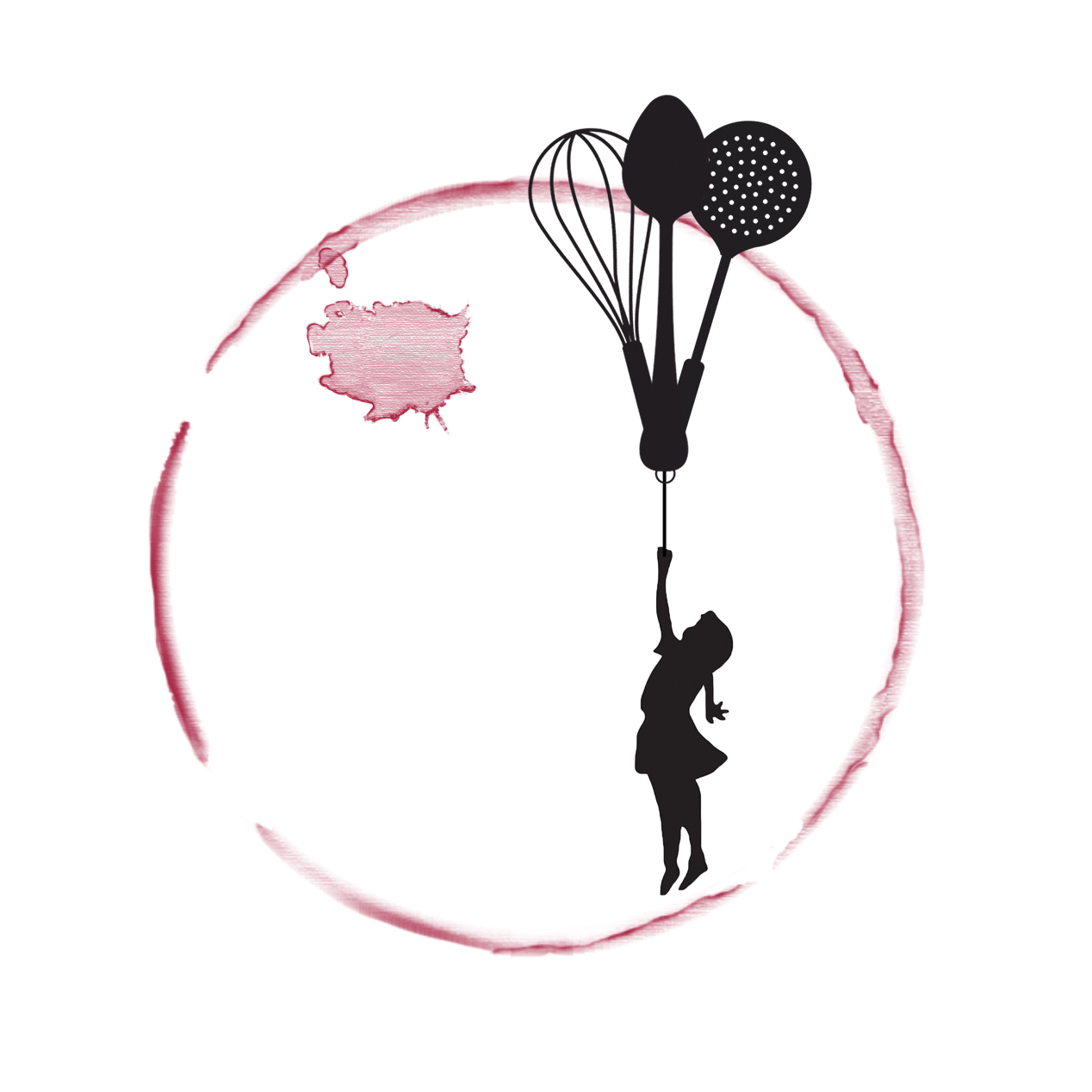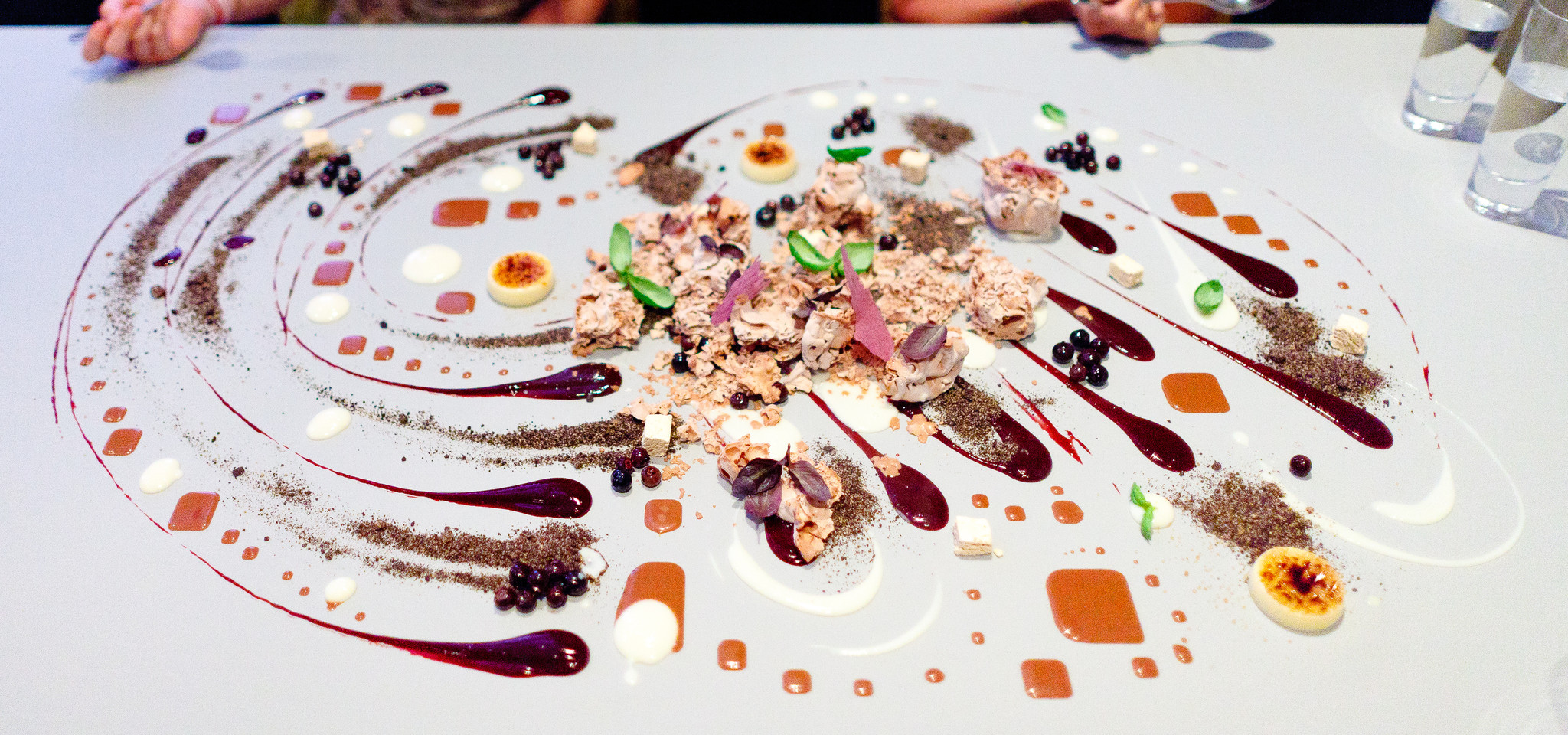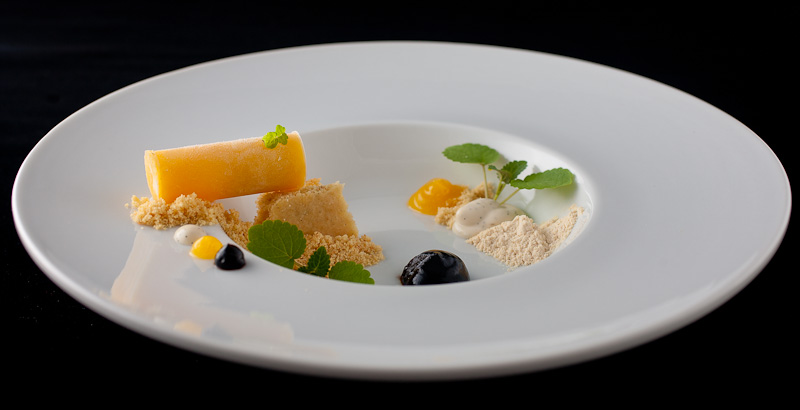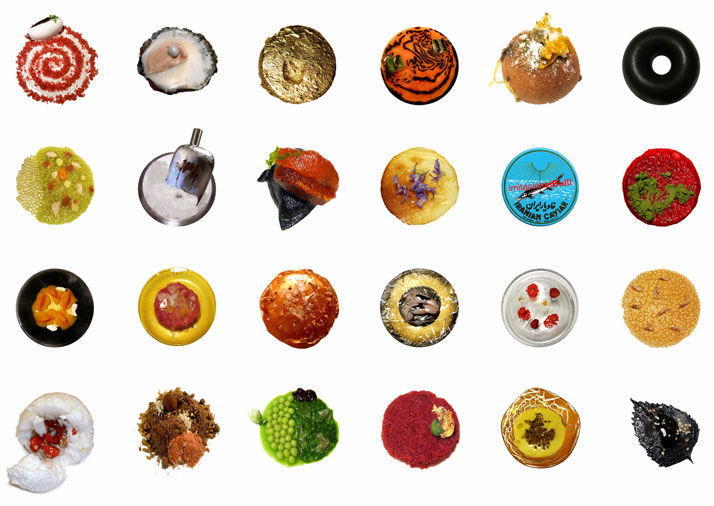The History of Food Presentation
Raise your hand if you really, really love clock. Like this...
No? Nobody? Oh no, just you, restaurant owner that still wants to be in the 80's. I bet you love doilies, too.
As a person who studied food as well as commercial design, I've always looked at food a little too artistically. My impression of restaurants is not only defined by the food I eat, but the menu's typeface, the choice of wall decor, the way the floor plan works. I like design. I think well-designed things make the harsh world more pleasant. Plate design is often overlooked by chefs. I mean, they follow the trends and they try to keep up to date but the truth is they overlook why the trends exist.
Why is everyone obsessed with swiping sauces on plates with a spoon? Why did we spend a decade making everything a zigzag? Why did minimalism take over in the 60's? Things in life don't just happen. They don't just appear and honestly, nothing is really a miraculous invention. Everything is connected and influential. Food is existentialism at it's finest. Just, ya know, stay with me here.
Take the minimalism movement created apparently by Alice Waters and Charlie Trotter during the 60's. Then take a step back. Bauhaus was established in 1919 in Weimar, Germany and existed in three different cities until 1933 when it very sadly closed due to... well... if you don't know your history just google "1933". Bauhaus loosely meant "school of building" and represented a new beginning in design after the end of World War I. Bauhaus is commonly believed to be the most influential establishment on modern design. When the German monarchy fell apart after their defeat, censorship was lifted and Bauhaus was created to allow radical experimentation in the arts. Bauhaus stood behind craftsmen and believed in objects that provided no distinction between form and function. Though Bauhaus as a collective was responsible for endless concepts and design dreams, it was especially influential on typography. In 1957, Helvetica was created by a Swiss gentleman, Max Miedinger, influenced by a famous 19th century typeface Akzidenz-Grotesk which was influenced by Didot.
Helvetica, though I could go on and on about it, is actually really simple. It just exists. It's the typeface of all typefaces. It's blamed for war. It's painfully boring and yet, it represents form and function. It has it's own documentary available on Netflix. It's clean, legible lines allow the words to speak instead of the typeface. It's no coincidence that as the world began turning their eyes to Helvetica, Alice Waters was rebelling against the culinary world and starting a movement of minimalism in food. This was happening during a time when it was absolute standard that protein sat at 6:00, starch sat at 9:00, vegetable sat at 12:00, and a ridiculous, inedible garnish sat at 3:00. Alice Waters was not only responsible for a culture shock of trend in plating, but in allowing food to speak for itself. She supports local, sustainable, and seasonal products and her dishes at Chez Panisse are not meant to overwhelm you with a grandiose appearance that startles you at first sight. Just like Helvetica, her food gave you the opportunity to quickly and efficiently understand it while being existentially complicated. She took the existence of plating trends, which though had utilitarian form lacked in function, and through it against the wall.
During the same period, molecular gastronomy was making it's very first appearance. elBulli had just opened in Catalonia, Spain thought it didn't quite represent what we know as elBulli today. Ferran Adria was employed by elBulli in 1984 and by 1997, they had gained their third Michelin Star. Meanwhile, here in America, cooks are going nuts realizing they don't have to put food on a plate in accordance with a clock! Waters and Trotter were both trying to push the minimal food movement while some other clowns decided to bring the squeeze bottle onto the expo line and start making EVERYTHING a zig zag, spiral or dots. Some other clowns are carving tomatoes into roses and lemons into crowns. Then, one guy in particular, started shouting BAM and throwing spices on rims of plates and dousing plates in cocoa powder. Somehow we made it through and we spend our free time ogling Alinea plates, reading Modernist Cuisine and maybe even drooling over some Ad Hoc. Here's the thing about the spice throwing, zig zaggin' clowns, they're all part of the story. You can't get to Z from A without all of the shit in between.
Somehow, we make it to where we are today. We have this incredible influence from modernists to do things with form and function, we made it to an age where food is presented all together and used to build each item up, and of course, we became inspired by the molecular gastronomy scientists who turned eating into a sensory experience. Everything in our history is connected to our present. Even more scary, it's already creating what will be our future. So remember, when you next find yourself painstakingly reorganizing and rearranging a new addition to your menu, it's not as simple as defining the next trend; its honoring the trends that have all come before it.
BAM!




